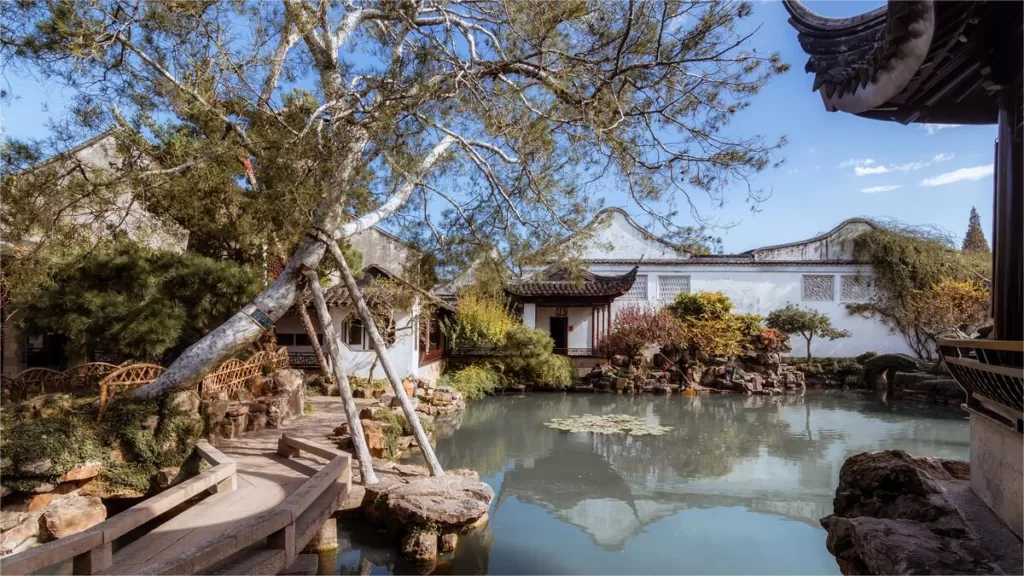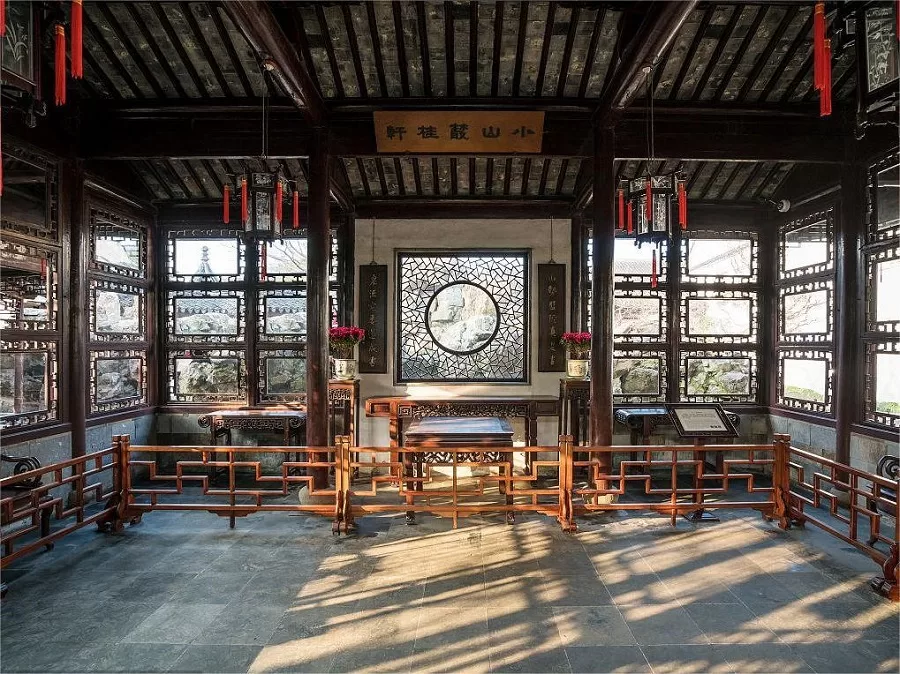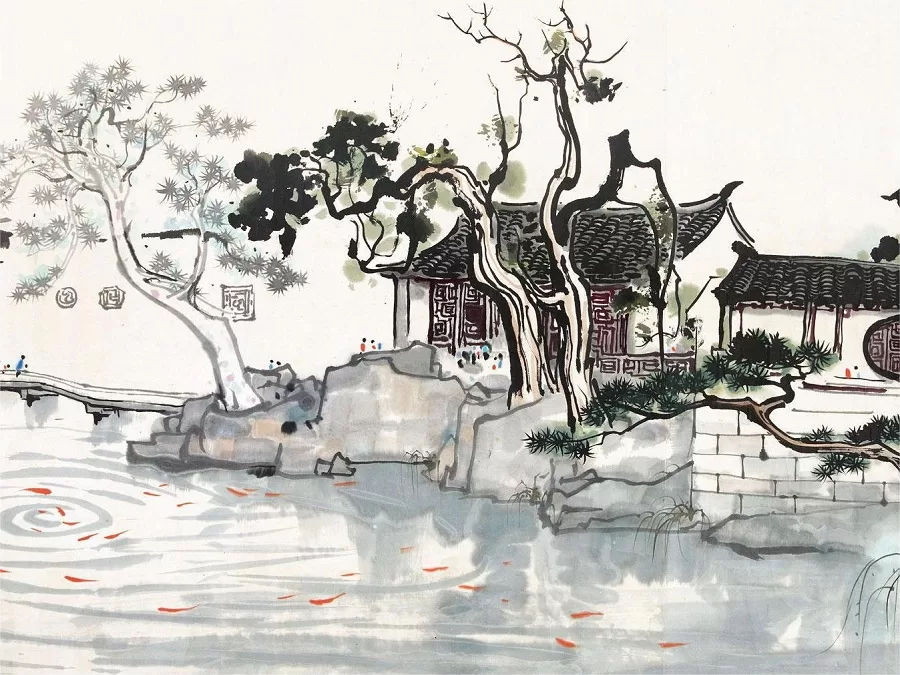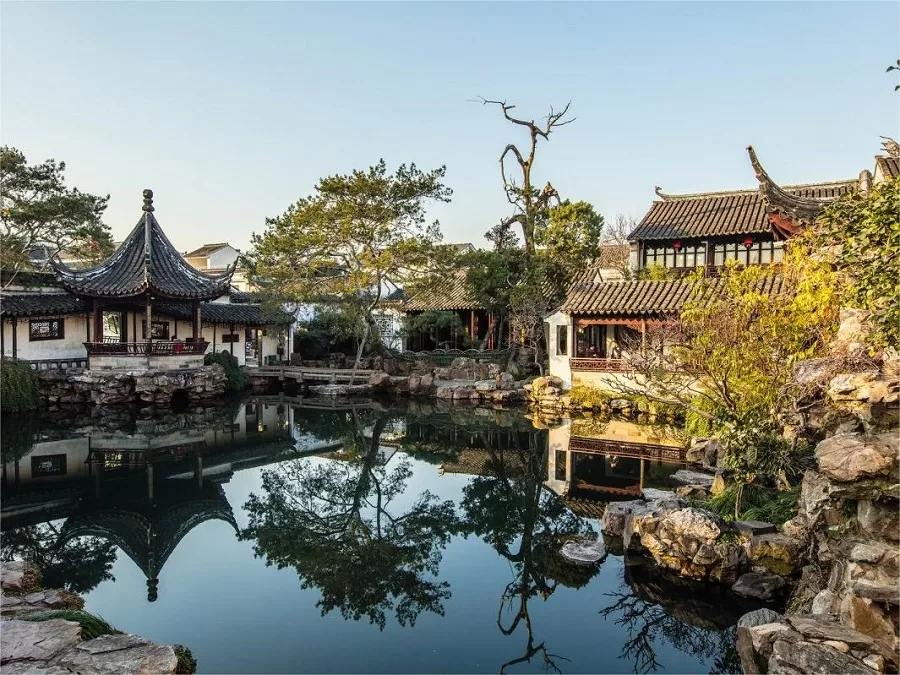Jardín del Maestro de las Redes - Precio de la entrada, horario de apertura, ubicación y aspectos destacados


The Master of the Nets Garden, known as Wangshi Yuan in Chinese (网师园), has a rich history dating back to the Southern Song Dynasty (1127-1279 AD). Originally the site of the “Wanjuan Tang,” a library owned by the Song Dynasty bibliophile and former official, Shi Zhengzhi, the garden was initially named “Yuyin.” However, it fell into disrepair over time. In the Qing Dynasty during the Qianlong era, around 1770 AD, the retired Gentleman of the Imperial Clan, Song Zongyuan, purchased the site and undertook its reconstruction, giving it the name “Wangshi Yuan.”
Throughout its existence, the garden changed hands several times, often being owned by literati and scholars who left behind inscriptions and poems, contributing to the garden’s cultural richness. Despite being the smallest among Suzhou‘s classical gardens, covering only half a hectare, the Master of the Nets Garden is a masterpiece of clever design. Through skillful layout, the small space is ingeniously utilized, featuring bridges, flowing water, pavilions, and towers that don’t make the garden feel cramped but rather exemplify the saying “small is beautiful.”
Beyond appreciating the garden’s layout, one of its distinctive features is the night tour, where visitors can enjoy traditional Chinese performing arts. The nighttime entertainment includes various programs such as storytelling, Kunqu opera, traditional dance, flute and Xiao performances, ancient Qin music, and tea art accompanied by painting. This unique experience, lasting around 45 minutes, breaks away from conventional passive observation. Instead, it encourages the audience to actively explore the garden, moving from one scene to another, unveiling the stories within. The integration of intangible cultural heritage into the garden experience adds a layer of meaning, showcasing the garden as a living canvas for cultural expression and preservation. The Master of the Nets Garden stands not only as a testament to classical Chinese garden design but also as a dynamic cultural space where history and tradition come alive through art and performance.
Índice
- Información básica
- Ubicación y transporte
- Highlights of Master of the Nets Garden
- Vlog about Master of Nets
- Consejos útiles resumidos a partir de reseñas
- Attractions near Master of the Nets Garden
Información básica
| Duración estimada de la visita | 1 hora |
| Precio del billete | 40 RMB (abril, mayo, julio, agosto, septiembre y octubre) 30 RMB (January, February, March, June, November, December) |
| Horario de apertura | 7.30 – 17.30 (16th April – 30th October) 7.30 – 17.00 (31st October – 15th April the next year) |
| Night Tour | 100 RMB |
| Night Tour Time | 19.30 – 22.00 |
| Número de teléfono | 0086-0512-65293190 |
Ubicación y transporte
The Master of the Nets Garden is located in the center of Suzhou. Its exact address is No. 11, Kuojiatou Alley, Gusu District, Suzhou, Jiangsu Province, China. To get there, visitors can choose the following ways:
Autobús: Take bus 202, 529, 931, or 9003, get off at Wangshiyuan Stop (网师园站), and walk about 100 meters to the east to reach the garden.
Metro: The nearest metro station to the Master of the Nets Garden is South Garden North Road (Nanyuan Beilu, 南园北路) on line 5. After getting out of the station from Exit 4, walk along Tianwei Alley to the north to reach the garden.
Highlights of Master of the Nets Garden
Intimate Garden Layout

The Master of the Nets Garden, though small, boasts an intimate layout that captivates visitors with its charm. Its cozy scale and interconnected courtyards offer a sense of seclusion, providing tranquil spaces for reflection. Skillful use of space, symmetrical design, and meandering pathways create a harmonious composition, guiding visitors through picturesque scenes of nature. Enclosed spaces and carefully framed views enhance the garden’s allure, encouraging contemplation and a profound connection with its timeless beauty. As a masterpiece of classical Chinese garden design, the Master of the Nets Garden showcases the artistry and ingenuity of creating an enchanting and intimate sanctuary within its limited area.
Elegant Architecture

The Master of the Nets Garden showcases elegant and exquisite Chinese architecture that reflects the refined tastes of ancient scholars. The main hall and pavilions feature intricate woodwork, ornate carvings, and elegant calligraphy, exemplifying traditional craftsmanship. Delicate latticework, gracefully curved eaves, and intricately painted beams enhance the overall aesthetic. Each structure harmoniously blends with the garden’s natural surroundings, creating a seamless integration of architecture and landscape. The combination of stunning pavilions, artistic details, and the tranquil backdrop of the garden evokes a sense of timeless beauty, making it a captivating destination for those seeking to immerse themselves in classical Chinese architectural artistry.
Poetic and Literary Connections

The Master of the Nets Garden is steeped in poetic and literary connections that add a deeper layer of cultural significance. Its name itself derives from a renowned poem, likening the garden’s design to a master weaver’s net, symbolizing the intricacy of its layout. Throughout history, the garden has inspired countless poets, artists, and writers who have sought solace and inspiration within its serene ambiance. It serves as a muse for traditional Chinese arts, including Kunqu opera performances and classical music recitals, bringing to life the rich artistic heritage of Suzhou.
Scenic Landscape

The landscape of the Master of the Nets Garden is a mesmerizing fusion of nature and human ingenuity. Serene water features, including a picturesque pond and meandering streams, intertwine gracefully with weeping willows and other lush greenery. Taihu rocks, meticulously arranged, add a touch of natural splendor. Delicate bridges and pavilions harmonize with the surrounding environment, offering picturesque viewpoints. The garden’s small size is ingeniously utilized to create intimate spaces and hidden treasures, encouraging exploration and contemplation. With its skillful arrangement of elements, the landscape evokes a sense of tranquility
Vlog about Master of Nets
Consejos útiles resumidos a partir de reseñas
Night Tour Experience: The night tour of the Master of the Nets Garden is organized in a group format, with around 30 people per group. A guide leads the tour, showcasing various performances. Alternatively, you can explore the garden on your own, but keep in mind that performances are scheduled, and you may need to wait for the next set of performers.
Seven Distinct Performances: The night tour includes six different performances: Kunqu Opera, Kunqu Dance, Guqin (ancient Chinese zither) performance, Pipa and Xiao (traditional Chinese musical instruments), and Pingtan (a form of storytelling and ballad singing). Each performance adds a unique cultural touch to the overall experience.
Visit the Reconstructed Hall of Dian Chun Yi: The Hall of Dian Chun Yi in the Master of the Nets Garden has been faithfully replicated and is now displayed at the Metropolitan Museum of Art in the United States. This exhibit is hailed as an eternal showcase in the history of Sino-American cultural exchange.
Combine the Visit with Shiquan Street: The exit of the Master of the Nets Garden leads to Shiquan Street. Take advantage of this proximity to explore both places in one visit, enhancing your overall experience.
Choose Off-Peak Hours: Opt for visiting the garden just before closing time for a more serene and picturesque experience. Arriving around 16:20 seems to be an ideal time, with only around 30 people present within the garden.
Attractions near Master of the Nets Garden

Suzhou Confucian Temple

Calle Shiquan, Suzhou

Pabellón Canglang
Lugares históricos de Jiangsu, Atracciones de Suzhou